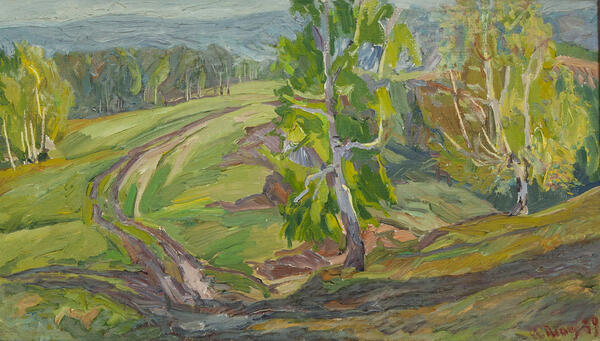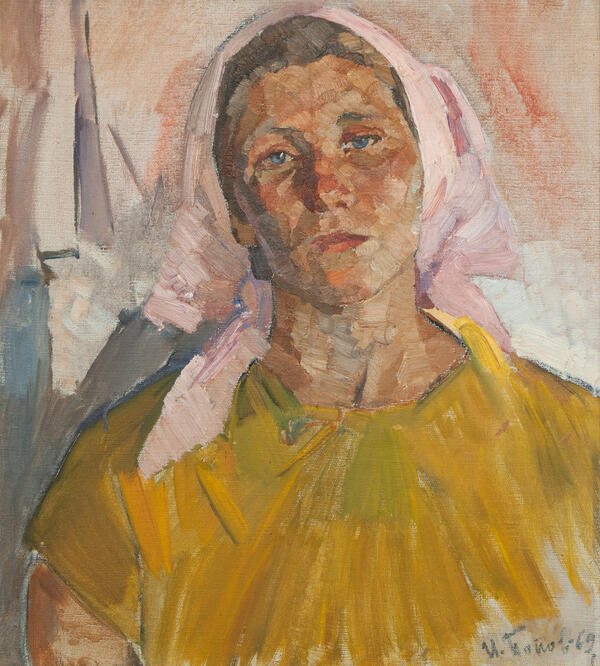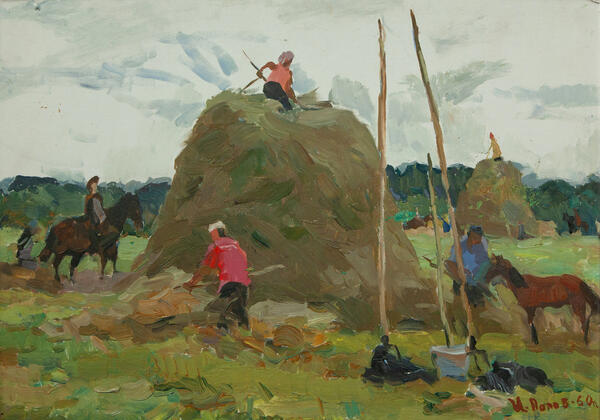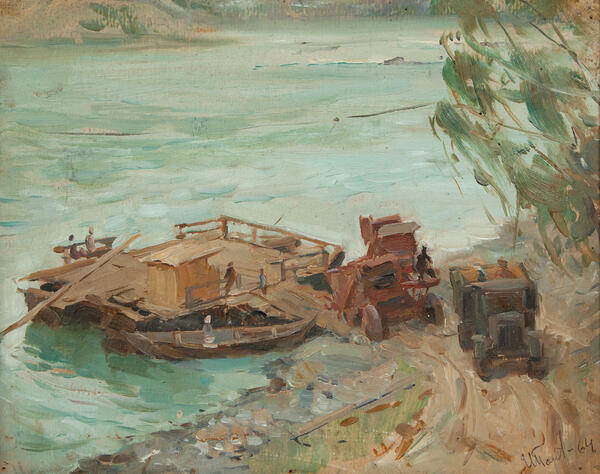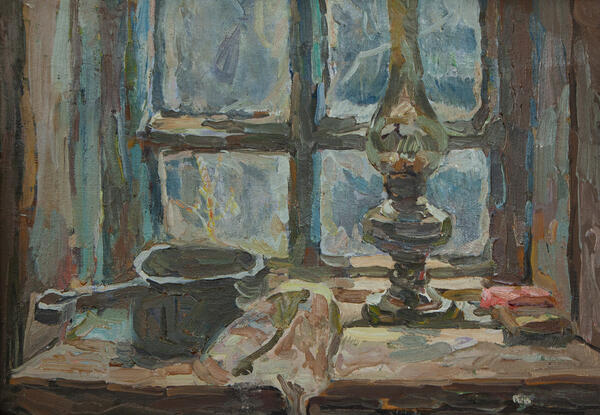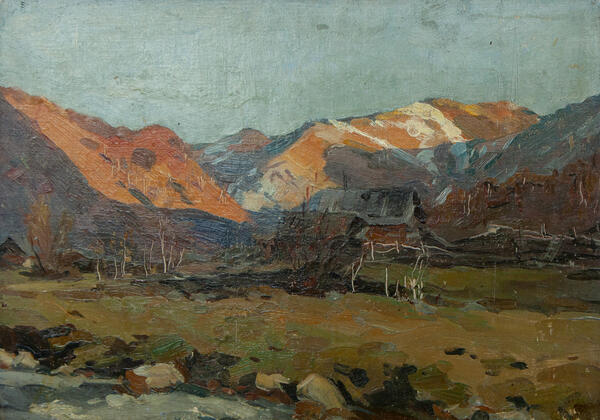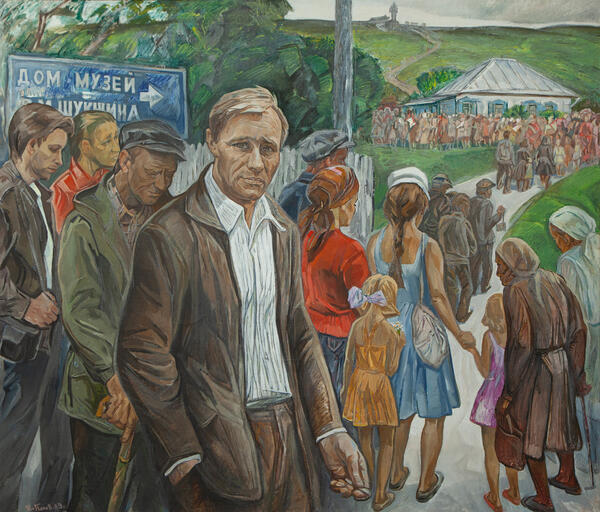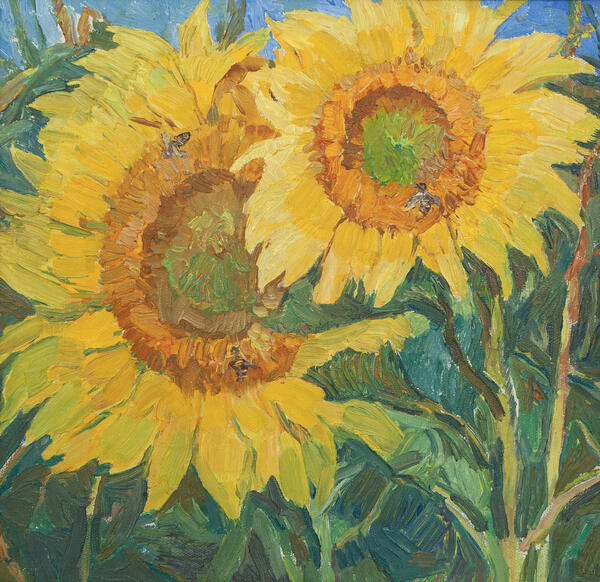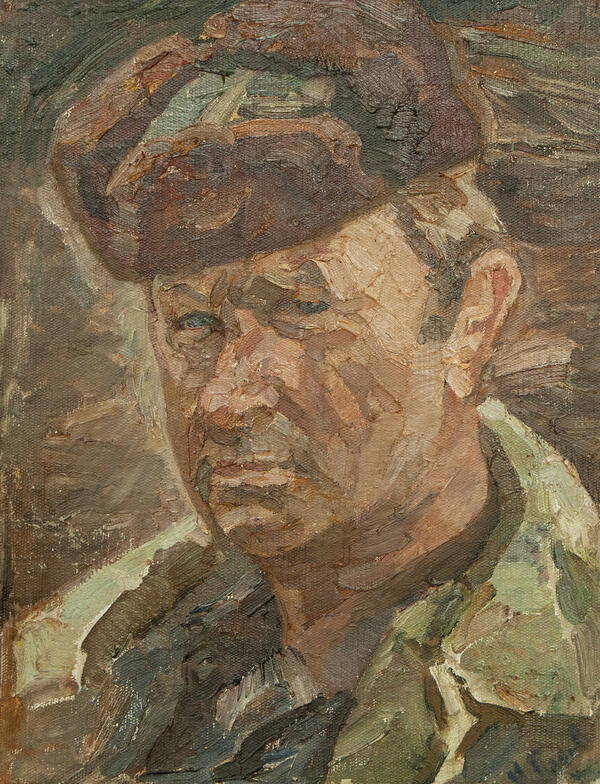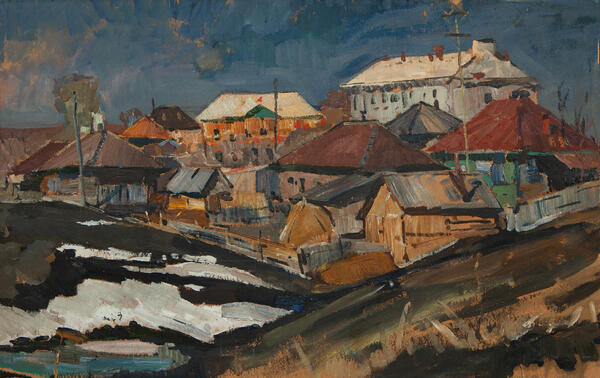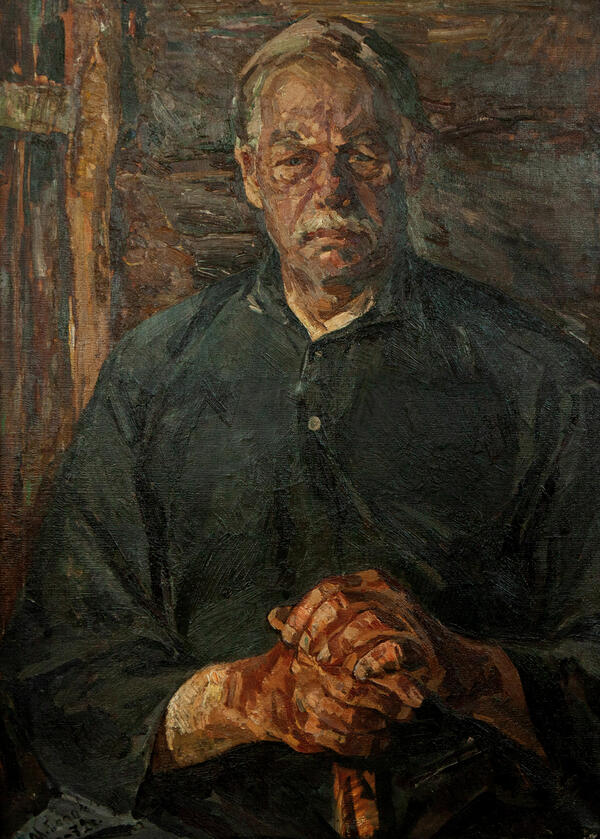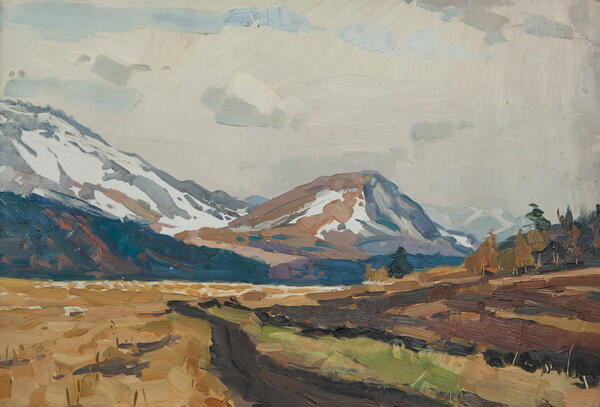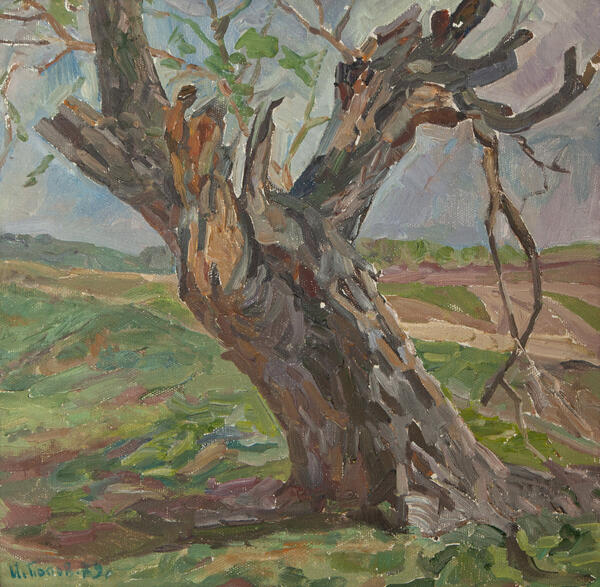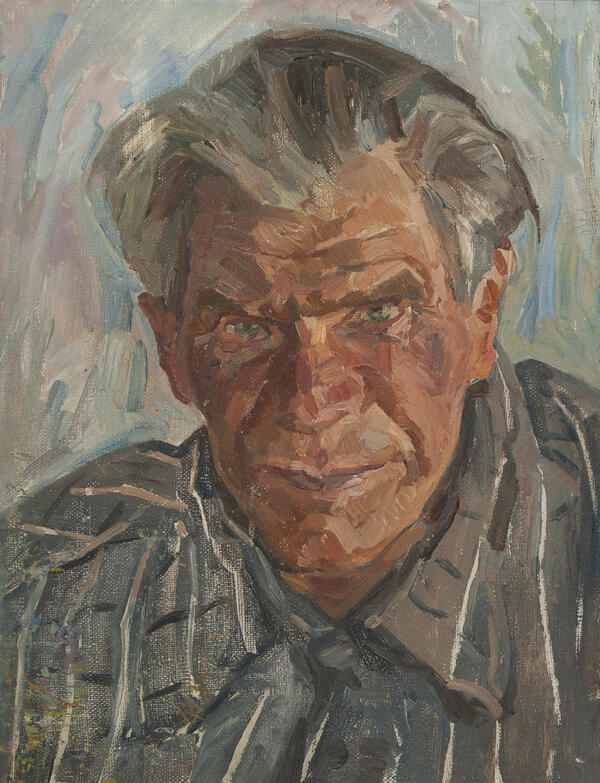Ivan Petrovich Popov worked in various genres and techniques, with portraiture being his main specialization.
“The artist Popov went on leisurely walks around his native land, loved it deeply, and was happy to meet his relatives. They were always around because Popov was also around them. Among them were members of his immediate family, distant relatives from Altai villages, and Vasily Shukshin… All the characters in his landscapes and portraits belong to the same type — a resident of a Russian village. The artist also grew up in a village. When he moved to the city, he hardly left the village at heart. It was more like he just went out the fence at the end of the village. His art is autobiographical, like a self-portrait,” the art historian Pavel Dmitriyevich Muratov noted.
In the painting “Bidding My Son Farewell. Waiting” from the collection of the Iskitim Museum of Arts and History, the artist depicted himself. Although his face is recognizable, the self-portrait can also be considered a collective image of Russian villagers, with their common problems, fate, and outlook on life.
The art critic Pavel Muratov wrote, “‘Bidding My Son Farewell’ is not a self-portrait in the strict sense. It is more than a self-portrait. It is about the sadness of saying goodbye to the young people leaving the village. The village is getting empty. It is getting older. Elderly people are left behind. In spirit, Ivan Popov is with them…” Ivan Popov kept returning to this painting for more than ten years, but eventually left it unfinished, thinking it was a failure.
This painting had several titles: “Bidding My Son Farewell”, “Father”, and “Waiting”. For a long time, the artist struggled to find a solution for a complex artistic concept. In an earlier version, Ivan Popov also depicted a young soldier portrayed as his son Andrey who posed for the painting. Eventually, he left only the father saying goodbye to his son. Fortunately, the studies for the painting have been preserved. This style was characteristic of Ivan Popov. For him, physical actions were less important than the inner psychological state of the characters. This is why he worked on his paintings slowly, using sketches, studies, and drafts. Throughout the process, the number of characters changed, accents shifted, and details appeared or vanished.



